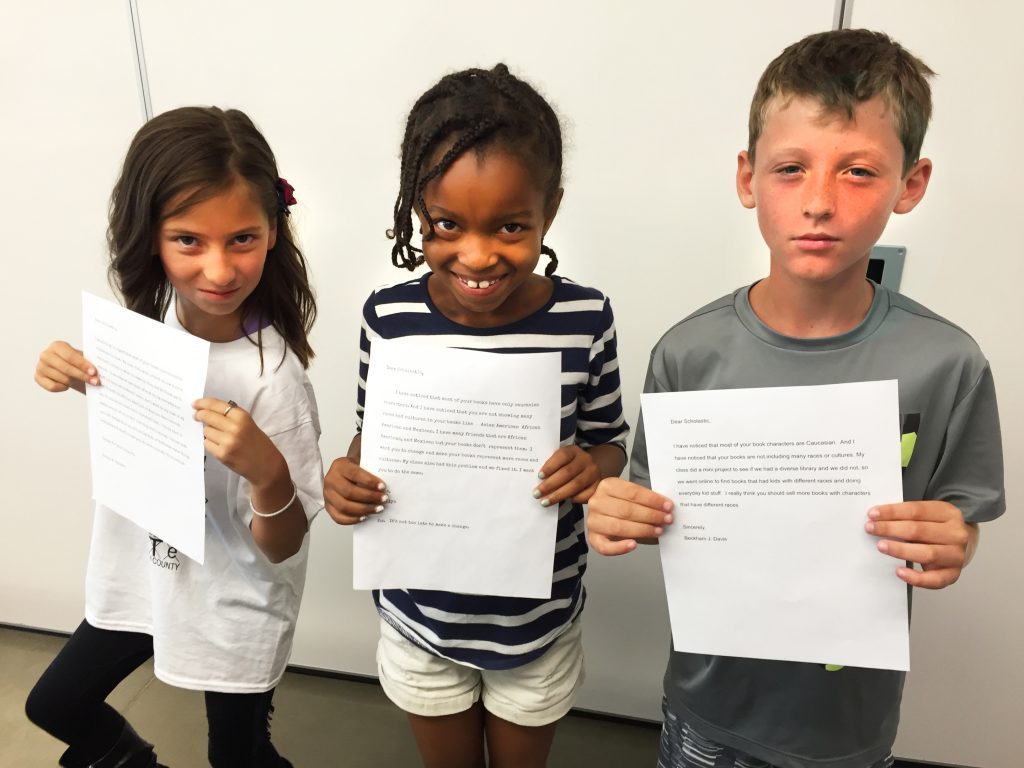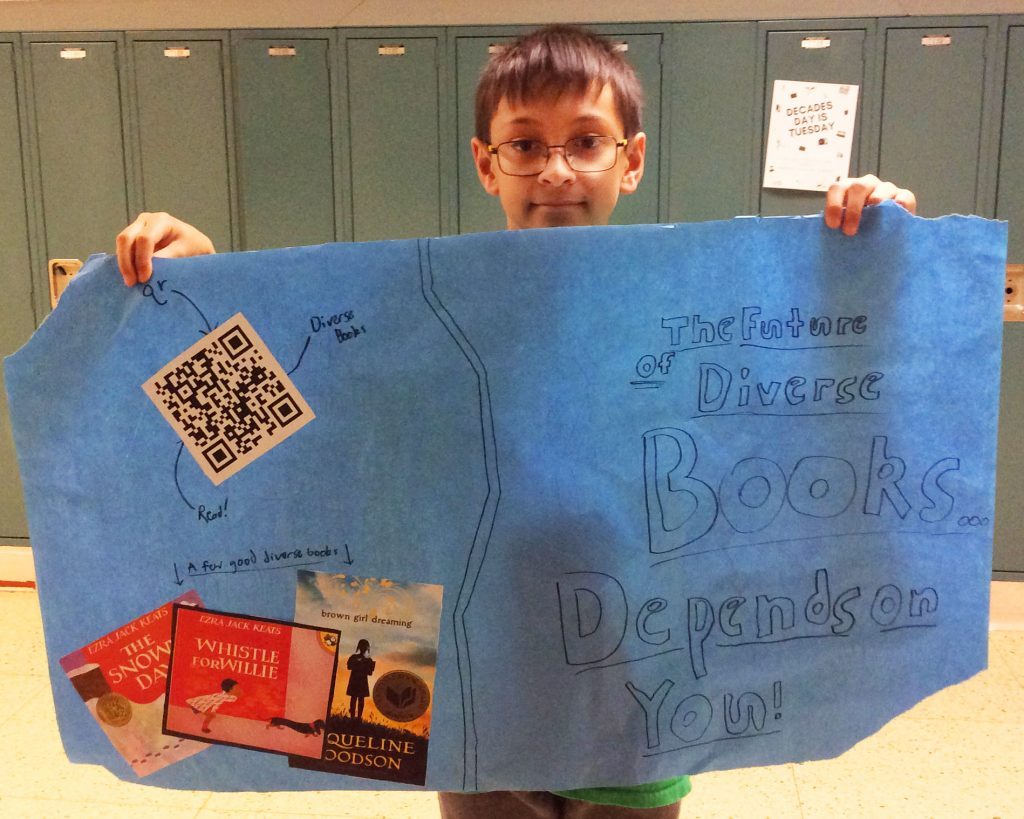We share here articles and ideas that parents and teachers can use to help children develop critical literacy skills that will help them as citizens and consumers for years to come.
Critique the Scholastic Catalog
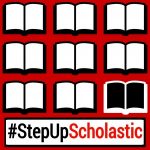 #StepUpScholastic is a campaign for teachers, parents, and students to tell Scholastic to publish and distribute children’s books that reflect and affirm the identity, history, and lives of ALL children in our schools. Scholastic must increase the representation of people of color and Native Americans to match their audiences. Use the resources below to critique the catalog,
#StepUpScholastic is a campaign for teachers, parents, and students to tell Scholastic to publish and distribute children’s books that reflect and affirm the identity, history, and lives of ALL children in our schools. Scholastic must increase the representation of people of color and Native Americans to match their audiences. Use the resources below to critique the catalog,
Consider the books that should be in our homes and classrooms. How does this vision of a robust library compare to the selection in the Scholastic catalog? As one of the lead providers of children’s books to schools, does Scholastic offer the books we need? Examine and assess the selection offered by Scholastic.
Children and adults can consider questions such as these while they look at a Scholastic Catalog:
- How many books by or about people of color and Native Americans do you see?
- Does this reflect the diversity that you see in your school, community, and/or the world?
- Of those books, how many are affirming, honest, and read-me-again interesting?
- If they are about a famous person, is it someone new or the same few people already on your bookshelf?
- Does the famous person make change all on their own or as part of a group effort?
After the assessment, you and/or the child can write a letter to Scholastic and spread the word.
Critical Literacy in the Classroom
Below are examples of how classroom teachers have engaged their students in critical examination of children’s books.
Third Graders Assess and Improve Diversity of Classroom Library
Third grade students at High Tech Elementary North County in San Marcos, California completed an investigation into the diversity of their classroom library. They created a data set and compared the groups using number lines, fractions, percentages, and graphs. After forming consensus around the fact that the library was not diverse based on race, students were given a budget to order books. Finally, some students wrote persuasive letters as part of the #StepUpScholastic campaign. Read more.
Virginia Middle School Students Critique Lack of Diverse Books
Sixth and seventh grade reading students at Gunston Middle School in Arlington, Virginia learned about and researched the lack of diversity in children’s and young adult books. Teaching for Change staff member Iris Jacob answered students’ questions about the problems of stereotypes and lack of diversity in books and how they affected her via a skype session. Students then chose a research topic, wrote a research reflection, and designed action projects to address the problems they found in their research. Read more.
6th Grade at Bank Street
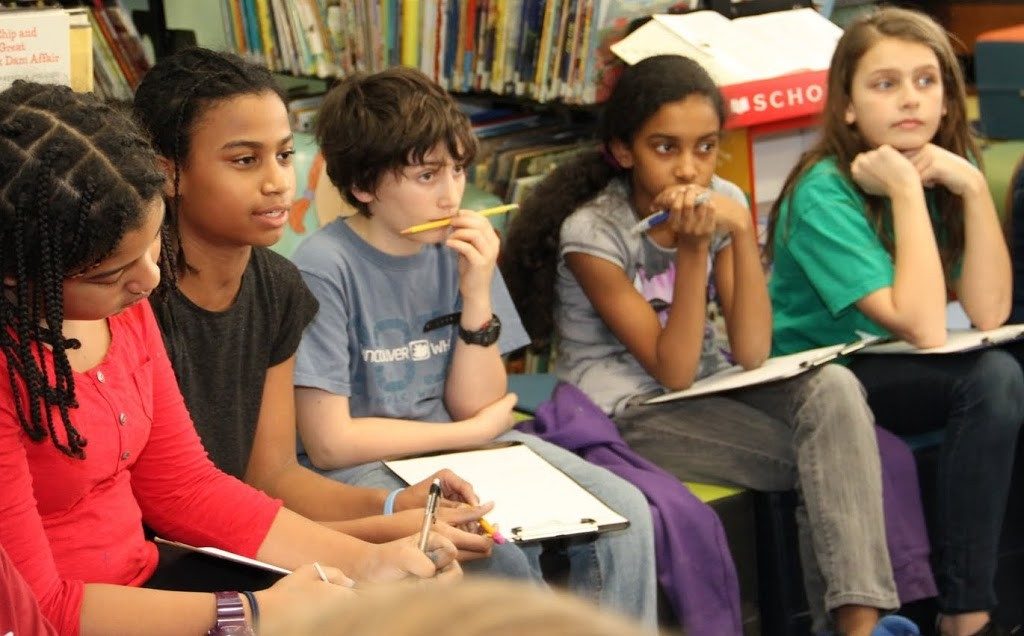
In October of 2102, Jamie Steinfeld’s sixth-grade Humanities class began to study book covers with Allie Bruce, Children’s Librarian, and Anshu Wahi, Diversity Director. Read a detailed description of their process and outcomes.
3rd Grade Students of Ruben Brosbe
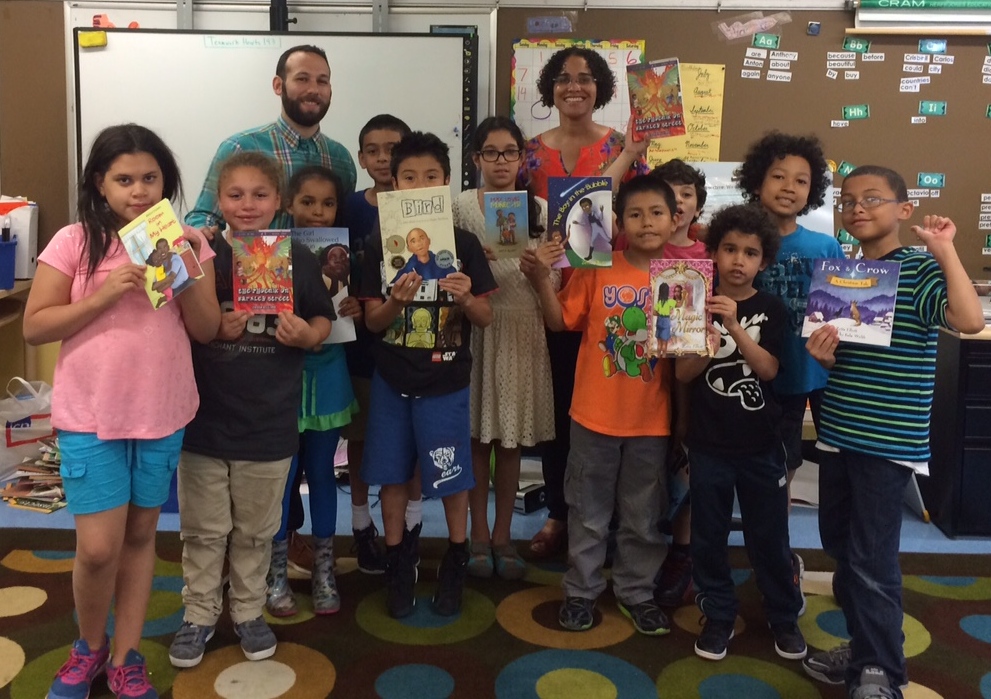
Ruben Brosbe describes the preparation for his students #DearScholastic letters.
These letters were a performance task at the end of a book review (persuasive writing) unit so my students already had weeks of exposure to opinion words and the diversity gap in kids lit. That said I don’t think this is essential. It’s just important context I think.
I opened the unit by asking my students to list all their favorite fictional characters (most gave me TV or movie characters). We crossed out all the non-human characters and then we went through the list and they told me the skin color of the characters (at this point we didn’t have a shared definition of race). When we were done we saw we had just one character of color on the board. The kids were shocked and angry. We had a great conversation about why we thought this happened and why it was unfair.
Then I showed kids a infographic on kids literature and we spent the next few weeks only reading books with characters of color. Over the course of this time we talked about the experience of reading these books and the importance of “mirrors” and “windows.”
When the November Scholastic book catalog came we looked through it and counted the people of color. The lack of representation in the catalog led to the letter writing. Here are the directions I gave to students for their letters.
Articles and Resources on Critical Literacy
These articles and resources provide examples of how to engage students in critical literacy.
“Unlearning the Myths that Bind Us: Critiquing Fairy Tales and Cartoons” by Linda Christensen from Rethinking Popular Culture and Media (Rethinking Schools, 2011)
“Discovering Columbus: Re-reading the Past” by Bill Bigelow from Rethinking Columbus (Rethinking Schools, 2003)
Worksheet for Selecting Native American Children’s Literature from the Smithsonian National Museum of the American Indian
The #StepUpScholastic campaign is organized by American Indians in Children’s Literature, Ferguson Response Network, and Teaching for Change.
